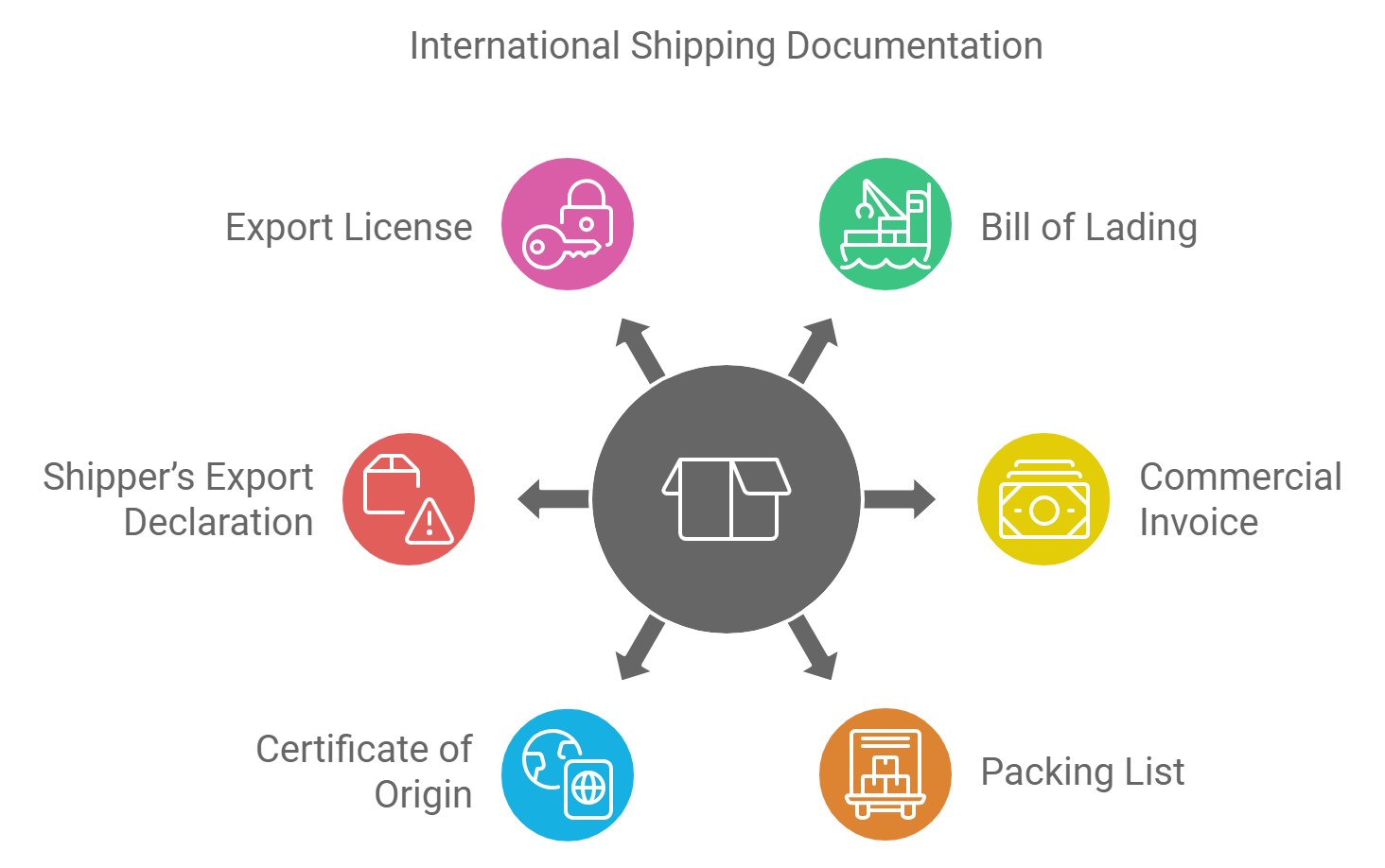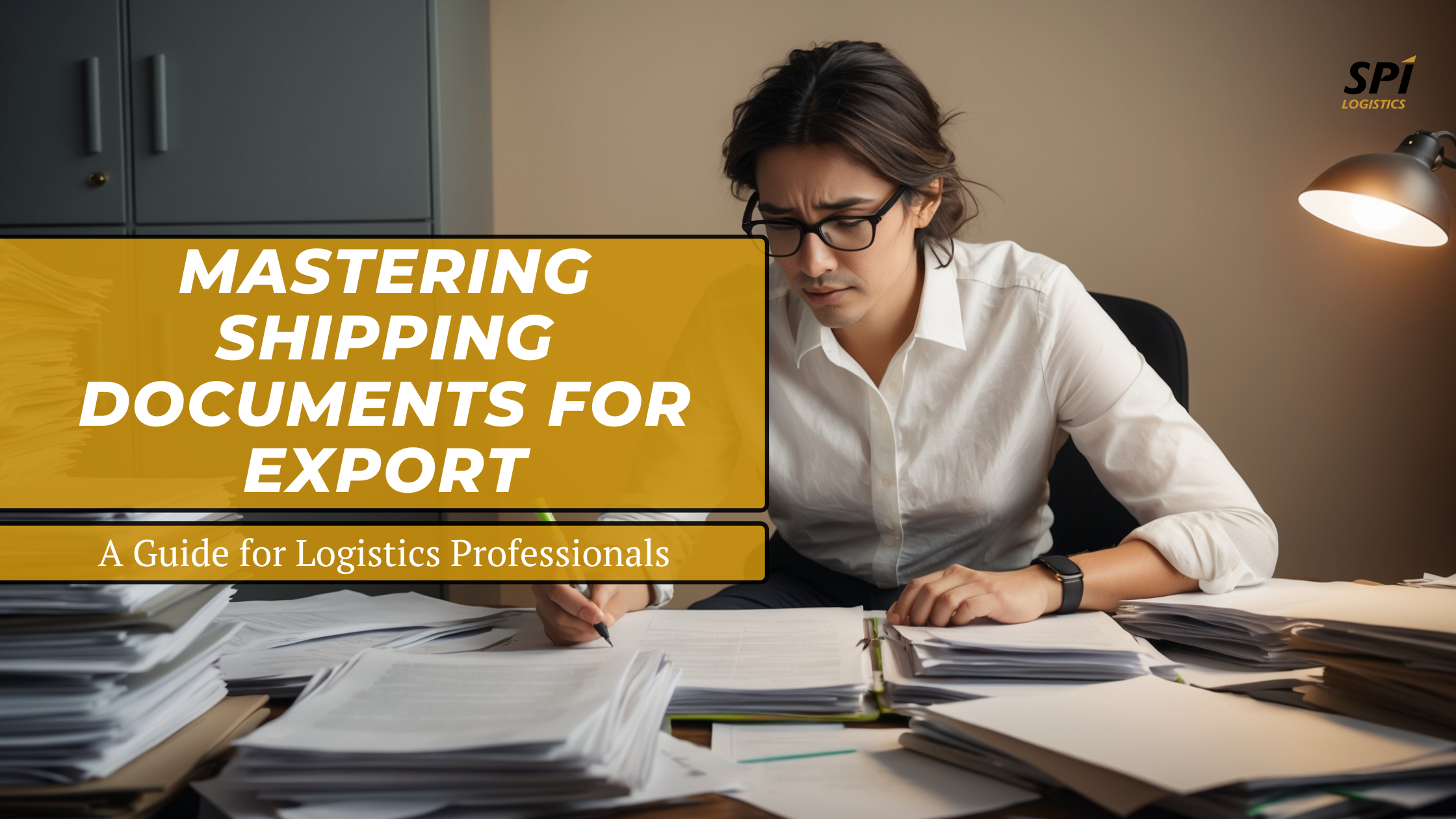Navigating the world of shipping documents for export can be challenging. As a professional in the logistics industry, you’re likely already familiar with the complex nature of international shipping, but ensuring the proper documentation is in place can be daunting. The correct export documents can streamline your operations, reduce delays, and save your company money. In this guide, we’ll break down the key documents you need, practical tips for managing them, and common pitfalls to avoid.
Why Export Documentation is Crucial
Accurate export documentation is essential for international shipping. It ensures that your shipment complies with customs regulations and acts as proof of the transaction between buyer and seller. Incorrect or missing documentation can lead to costly delays and penalties. Let’s review the critical shipping documents internationally that every logistics professional should be familiar with. A comprehensive freight management system can help logistics professionals handle essential export documentation smoothly, ensuring that each document—from Bills of Lading to Certificates of Origin—is organized and compliant with customs requirements. SPI’s freight management solutions offer logistics teams the tools they need to streamline these processes effectively.
Key Shipping Documents for Export

The following documents are typically required for most exports (Shipping Documents for Export / Export Documentation, 2023):
- Commercial Invoice: This document provides detailed information about the shipped goods, including their value, quantity, and description (Shipping Documents for Export / Export Documentation, 2023).
- Bill of Lading (BOL): A contract between the shipper and carrier that also serves as a receipt for freight services (Shipping Documents for Export / Export Documentation, 2023).
- Packing List: A detailed list outlining the contents of each package in the shipment (Shipping Documents for Export / Export Documentation, 2023).
- Certificate of Origin: This document verifies the country where the goods were manufactured (Shipping Documents for Export / Export Documentation, 2023).
- Shipper’s Letter of Instructions (SLI): A document that contains specific instructions for transporting international shipments (Shipping Documents for Export / Export Documentation, 2023).
- Automated Export System (AES) Filing: Required for certain exports from the United States (Shipping Documents for Export / Export Documentation, 2023).
“Accurate documentation is the key to avoiding delays and ensuring smooth international shipping processes.”
Documents Required for International Shipping
For international shipments, you may also need additional documents depending on the destination and nature of the goods being shipped (International Shipping Documents, 2023):
- Proforma Invoice: A preliminary bill sent to international prospects before the actual purchase (Shipping Documents for Export / Export Documentation, 2023).
- Ocean Bill of Lading: Required for shipments made across international waters (Shipping Documents for Export / Export Documentation, 2023).
- Safety Data Sheet (SDS): Necessary for shipments containing potentially hazardous chemicals (Shipping Documents for Export / Export Documentation, 2023).
- Export Licenses: Required for certain restricted items (Shipping Documents for Export / Export Documentation, 2023).
If you’re shipping sensitive items like chemicals, include an SDS in your export shipping documents to avoid legal issues or customs delays.
Practical Tips for Managing Export Documents
Managing export documentation can seem like a headache, but there are several ways to stay organized and ensure everything runs smoothly. Here are a few practical tips:
- Use a Checklist: Create a list of required documents for shipping international for each type of shipment to ensure no document is overlooked.
- Double-check for Consistency: Ensure consistency across all documents to avoid customs delays. Inconsistent data between your Bill of Lading, Commercial Invoice, and Packing List could result in shipment holds or fines (Shipping Documentation Process, 2023).
- Submit Documents Electronically: Use electronic document submission systems like the Automated Export System (AES) wherever possible. This reduces paperwork and speeds up customs clearance (Shipping Documentation Process, 2023). Freight brokers and logistics professionals are increasingly using freight broker technology to manage export documents electronically.
“Consistency is key—small mistakes on export documents can lead to big delays.”
Ocean Freight Documentation: What You Need to Know

When shipping via ocean freight, certain documents are mandatory to ensure the cargo arrives safely and without unnecessary delays (Ocean Freight Documentation, 2023):
- Ocean Bill of Lading: This is a receipt and a title document for the goods transported.
- Commercial Invoice
- Packing List
- Certificate of Origin
- Safety Data Sheets (if applicable) are always required for hazardous materials (Ocean Freight Documentation, 2023).
The Shipping Documentation Process
The process for creating freight documents typically involves these steps (Shipping Documentation Process, 2023):
- Gather Shipment Information: Collect all relevant details about the shipment, including product descriptions, quantities, and values.
- Determine Required Customs Documents: Based on the shipment’s destination and contents, determine which documents required for export will apply.
- Complete Documents Accurately: Ensure that all documents are filled out accurately, with consistent information across each form.
- Submit or Attach Documents to Shipment: Submit the documents electronically or attach them directly to the shipment.
Following this process helps ensure that your export shipping documents are compliant and your goods pass through customs smoothly.
Challenges and Solutions in Managing Export Documentation

Even with the right tools and processes, managing international shipping documents has its fair share of challenges. Some common issues include:
- Miscommunication Between Departments: Information discrepancies can arise when different departments handle various aspects of shipping. Using integrated software can help prevent these errors. A freight broker CRM can be invaluable for keeping track of export documentation, ensuring consistency across records, and avoiding costly discrepancies. SPI’s CRM solutions support logistics teams in staying organized, especially when managing high volumes of shipments, to prevent errors and improve efficiency.
- Customs Regulations Changes: Customs regulations frequently change, especially for sensitive items. Keeping up with current regulations can prevent compliance issues.
“The right documentation process can mean the difference between a delayed shipment and a smooth operation.”
Simplifying Your Export Documentation
Export documentation is essential to your logistics operations, but it doesn’t have to be a hassle. By understanding the key documents required for shipping, staying organized, and leveraging digital tools, you can streamline your process and reduce the likelihood of costly delays.
Ready to take control of your export documentation? Contact SPI Logistics today. Our team of experts is here to help you streamline your documentation process and ensure that your shipments move smoothly, no matter the destination.
Don’t let documentation slow down your international shipments. Contact SPI Logistics now to learn how we can help you with your export needs.
References
International Shipping Documents. (2023).
Ocean Freight Documentation. (2023).
Shipping Documentation Process. (2023).
Shipping Documents for Export / Export Documentation. (2023).




